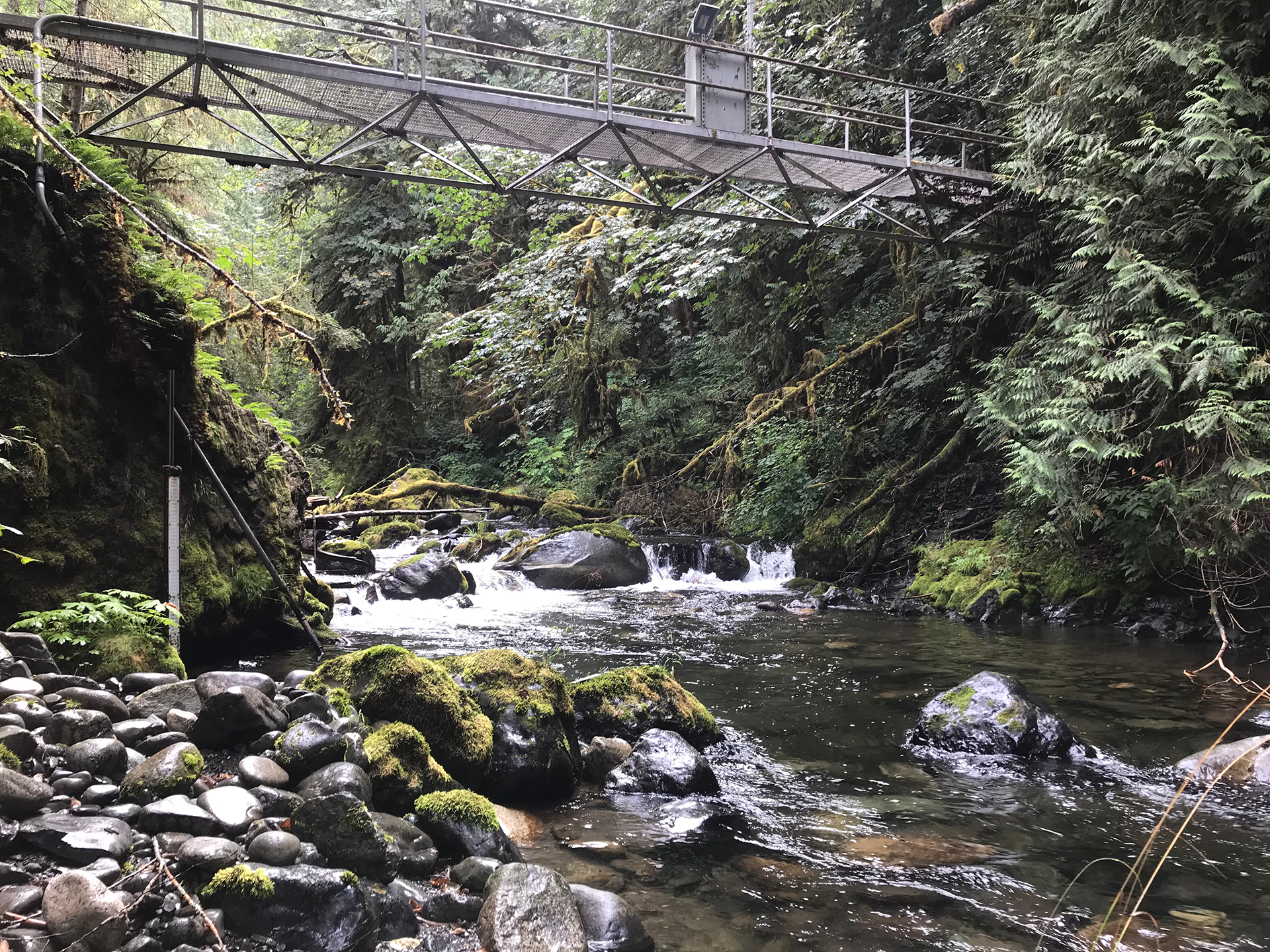
Upstream view of Morse Creek below Aqueduct gaging station in Clallam County (Site ID #18C150).
October is a month for fall foliage, warm beverages, creepy tales — and a new water year.
Three months before the calendar year changes, on the first of October, hydrologists and other water scientists mark the start of a new “water year,” often written WY. On Sept. 30, 2022, WY22 ended, and on Oct. 1, 2022, WY23 commenced. Each water year is named after the calendar year at the time of its close.
Hydrologists (scientists who study water flow and quantity) follow this convention, as they have been for more than a century, ever since the U.S. Geological Survey (or USGS) released its first water-year compilation in 1911.
Why is the water year different from a regular calendar year? It has to do with the water cycle. Precipitation, like rainfall or snow, that happens at the end of a calendar year, affects the level of water and the flow in rivers and streams during the next spring and summer. It makes sense to start the a WY a little earlier than the calendar year, so scientists can look at how much water has cycled through the system over the past year.
The US National Weather Service uses a similar seasonal year. Other regions of the world mark different years based on their seasonal weather. For instance, the Australian water year begins on July 1.
How hydrologists celebrate
For our streamflow monitoring team, October is a time for hot beverages, preparing WY streamflow quality assurance technical notes, and getting ready for the high-flow season of fall and winter. Yearly data allow scientists to compare current trends to historical trends in a watershed or across the state. The changing of the WY is time to assess these data.
Water-quantity numbers post to the Freshwater DataStream application in nearly real time, using solar-powered continuous monitoring stations and satellite telemetry. Throughout the WY — rain or shine — our hydrologists conduct field visits to confirm the reliability of all continuous monitoring stations. Fall and winter high-flow visits call for full rain gear. Learn about how we measure streamflow on our website.
Following the freshwater (data) stream
Data include the amount of water in rivers and streams, as well as the amounts of precipitation and other hydrologic contributions. Acoustic Doppler Current Profiler
Was WY22 a wet or dry year compared to other water years? There are ways to calculate just that, as well as different indices, trends, and observations that might cause one to call a year "wet" or "dry."
So far, it appears that WY22 in Washington state will go down in the record books as wetter than many recent years. This was largely because the dry part of summer did not “kick in” until July, after a cold, wet spring. Mountains held onto their snow for longer, and sustained snowmelt provided some relief for rivers and streams later into the summer. Other trends, however, show drier summers. Despite this robust head start, many rivers were below normal by mid-September due to the prolonged warm and dry summer.
What will WY23 hold? We do not know for sure, but climatologists are predicting another cold and wet winter, which may be similar to last year. The snow is at its lowest amount, right about now, at the changing of this water year. The rivers and streams will run low until fall rains arrive. Some parts of the Puget Sound basin are already finding salmon crowded at the mouths of rivers, ready and waiting for rain, to swim home and spawn.
Celebrate with us
To celebrate the new water year, we can all do our part to appreciate water by using it wisely and conserving it.
Water is a finite resource. About three percent of Earth’s water is freshwater, and only a half of a percent is available for us to use. Most freshwater is locked in polar ice caps, glaciers, deep underground, and atmosphere, or is too polluted for us. That which we have is precious — celebrate it.
May this be your best WY yet. Happy new water year to you and yours!


